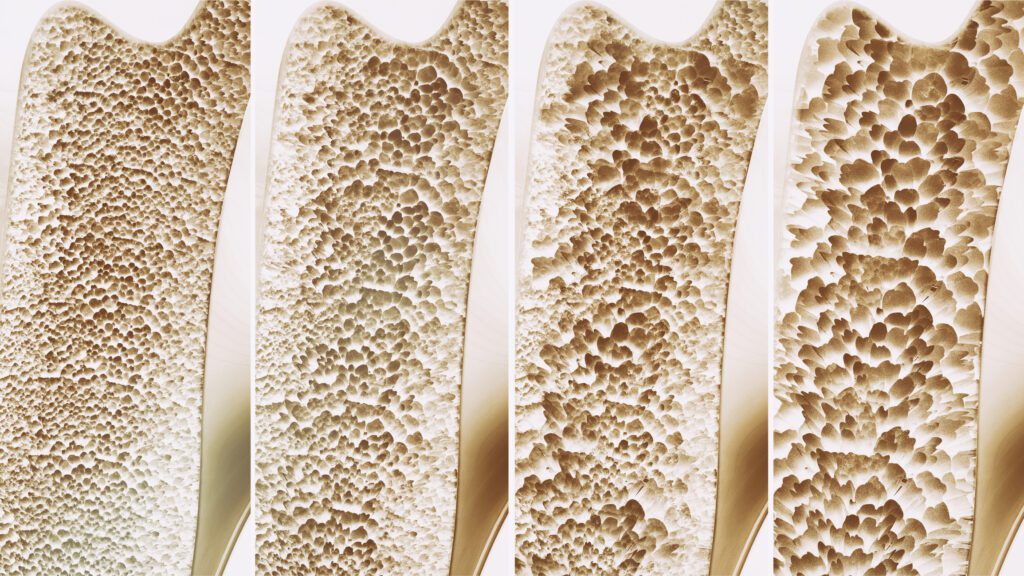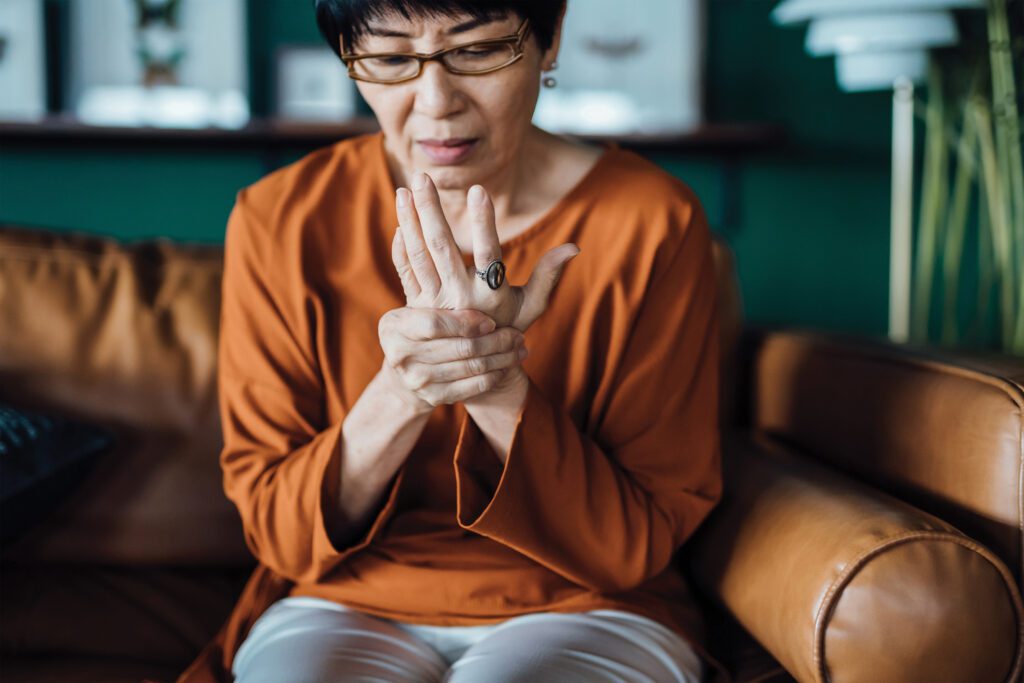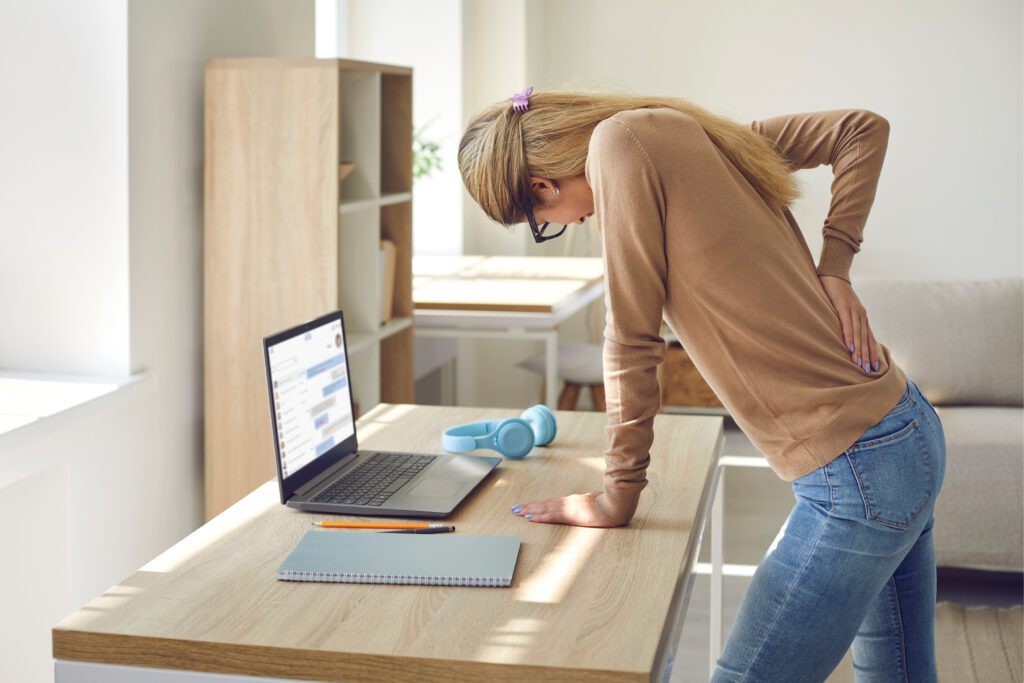Bones. Short of nursing a break back to health, you probably don’t think about them much. In fact, according to a survey by the National Osteoporosis Foundation, 94% of women don’t worry about their skeletons. But, just because we don’t worry, doesn’t mean there’s nothing to worry about. Osteoporosis is rampant among aging adults, with an estimated 10 million Americans currently suffering from this debilitating disease. What’s scarier? That number is expected to more than quadruple in the next 15 years. And that’s not all. Read on, because the bare bones of this sneaky disease might surprise you.

1 in 3 women over age 50 have osteoporosis.


“Osteoporosis is a skeletal disorder characterized by decreased bone strength predisposing individuals to an increased risk of fracture, and it’s common in postmenopausal women,” says Dr. Mary McKenzie, a physician with CHI Memorial Integrative Medicine Associates. With menopause, women’s bodies start producing less estrogen, a hormonal change that can accelerate bone breakdown. It’s even reported that women lose up to 20% of their bone mass following menopause. And unfortunately, as women age, the seriousness of a bone break or fracture increases exponentially, often requiring surgery and a lengthened recovery period.
You probably won’t know you have it.
Osteoporosis is frequently referred to as “the silent disease.” The reasoning for this? According to Dr. McKenzie, “Osteoporosis is considered ‘silent’ because it is not a condition you can feel. The bone thinning process occurs slowly over time, then progresses to severe bone weakening. This sets the stage for fracture, some of which are spontaneous, and not caused by trauma.” Therefore, just because you don’t recognize any symptoms doesn’t mean you’re in the clear. It is important to schedule yearly physicals to detect possible early warning signs.
Warning signs are present as early as your 20s.
While osteoporosis is most commonly associated with older adults, the warning signs can crop up before you’re finished blowing out the candles on your 30th birthday cake. Osteopenia, or low bone density, is a precursor to osteoporosis, and it’s reported that one in five women under 30 has it. Therefore, it’s never too early to take care of your bones. Dr. McKenzie recommends, “Develop a healthy lifestyle that fosters the following: maintaining a healthy body weight, exercising regularly with routines that include walking, running, and weight training, avoiding heavy alcohol usage, quitting smoking, and getting routine physicals each year to detect early warning signs.”


A woman’s risk of suffering an osteoporotic hip fracture is high.
In fact, it’s equal to her combined risk of breast, uterine, and ovarian cancer. Fortunately, there are tweaks you can make to your diet to improve bone strength. In addition to maintaining a well-balanced diet, up your intake of calcium and vitamin D. Eat foods rich in both, like cheese, milk, and yogurt. Other calcium-rich foods include almonds, dates, and sesame seeds, while eggs, salmon, and fortified cereals are all great sources of vitamin D. If you find you’re still struggling to reach appropriate levels, a doctor may recommend oral supplements. “It’s important to note that adequate levels of calcium and vitamin D can help strengthen bones and prevent fracture, but individuals who have already experienced a fracture will need more specialized treatment,” says Dr. David Bowers, the medical director at Siskin Hospital for Physical Rehabilitation.
Too much exercise can be just as damaging to your bones as too little.
While walking, running, weight training, and other moderate activities are great for strengthening bones, it is possible to over train and push your bones too far. Overdoing it on the elliptical, in the pool, or on a bike can actually cause your bones to lose density. Instead, doctors recommend exercises like kickboxing or running three times a week, along with strength training exercises like squats, pushups, and tricep dips. “Weight-bearing exercises are helpful in preventing and treating osteoporosis and preventing fractures,” says Dr. Bowers. “Adding light hand weights can help move weight through the spine as well, a common area for fracture risk.”
Genetics factor into your risk for osteoporosis.
You can thank your parents for your hair color, your personality…and your weak bones. Studies with families and twins have shown that genetic factors contribute to osteoporosis and other phenotypes (genetic characteristics) associated with fracture risk. In fact, it’s estimated that around 75% of a person’s peak bone mass is influenced by genetics. So, if mom or dad suffered from osteoporosis, your likelihood of developing the disease is greater. If you are genetically predisposed to osteoporosis, diet, exercise, and regular bone mass screenings are especially important.
Because osteoporosis doesn’t present obvious symptoms, a dangerous fracture could be the first sign if proper precautions aren’t taken. Therefore, regular bone density screenings are recommended for women over 65, or those with preexisting risk factors.
While preventing osteoporosis before its onset is optimum, there’s hope for those facing it head-on. “Not only can we rebuild bones damaged by osteoporosis, but with the appropriate management, we can now effectively reverse the disease,” says Dr. Bowers.
So make no bones about it: our skeletons are worthy of our attention.


Dr. Mary McKenzie
Physician, CHI Memorial Center for Integrative Medicine


Dr. David Bowers
Medical Director, Siskin Hospital for Physical Rehabilitation

